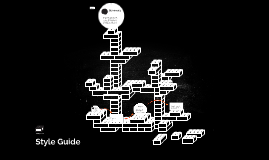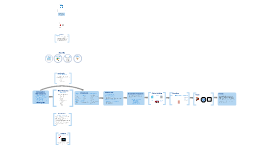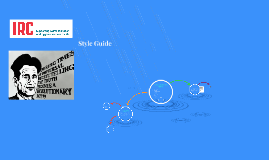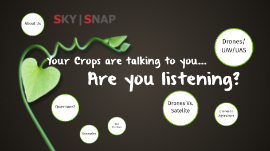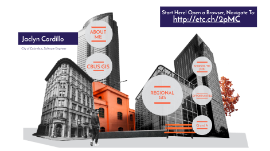OSU Presentation
Transcript: Your Crops are talking to you... Are you listening? About Us About Us 3 years of experience Worked in Oregon, Idaho, Montana, California We also do: pile calculations, assisstance with land surveying, 3D modeling, video production, live streaming, ect. Drones/UAV/UAS Drones/UAV/UAS Drone: Common Term UAV: Unmaned Aerial Vehicle UAS: Unmaned Aerial System Types of Drones Types of Drones Sensors Sensors * Sensor: Detects light spectrum that can be seen by the human eye. * Uses: Aerial Mapping and imaging, photogrammetry ( i.e. 3D modeling), plant counting, elevation mapping, ect. RGB/Visual RGB/Visual Multispectral Multispectral NDVI: Normalized DIfference Vegitation Index * Not to be confused with False NDVI This is done with normal RGB cameras and the results are not NEARLY as accurate. Uses: Determining plant health, count individual plants, ect. How NDVI Works As the plants become stressed the chlorophil becomes less reflective and shows a lower reflective value on the final processed scan. These reflecitve values are then color coded into a easily read map. How NDVI Works Collecting the immages: We come out 2-3+ times a year to scan the fields and retrieve the immages. Then process them. ***Aprox 500 immages taken Donna Delparte, a professior at the UofI, recently came out with a study on using NDVI scanning to find PVY in Potatoes with a 90% accuracy *http://www.capitalpress.com/Idaho/20170120/researchers-program-drone-to-hunt-pvy-in-potatoes The Future of NDVI The Future of NDVI Thermal Thermal Uses: Heat signature detection, Livestock detection, water temperature and water source detection, haystack evaluation Lidar Lidar What is?: laser light to densely sample the surface of the earth, producing highly accurate x,y,z measurements Uses: 3D Immaging, vegitation annalysis, highly accurate readings, object detection ect. Drones in Agriculture Drones in Agriculture Crop Monitoring Crop Monitoring • Diseases • Insects • Weeds • Crop Progress • Crop Stress Mapping Replanting Decisions Drainage Issues Crop Insurance Claims Yield Estimation Soil/Vegetation Moisture Monitoring Creation of variable application rate shape files Checking for Equipment malfunction Mapping Horizontal red lines show areas where the planter malfunctioned and missed planting entire rows of potatoes What else? What else? Plant counting Shape files for Variable Rate distribution (seed, fertalizer, water, pestasides, ect) NDVI maps can be overlaid with: Soil maps Shapefiles variable-rate spreader maps Visible image mosaics Harvest yield maps Google Earth maps GIS survey maps Aerial Imagery becomes more valuable over time Aerial Imagery becomes more valuable over time Regulations Regulations Commercial flights of any kind require the pilot to be liscenced through the FAA. (Note: The FAA considers commercial ANY flight that benifits your buisness with or with out monitary compensation) Commercial Commercial Private/recreational flights must still abide by many of the same regulations as commercial pilots. Registration of your drone is still undecided by the FAA, please check the regulation to keep your self up to date. Private/Recreational Private/Recreational Drones Vs. Satelite Drones Vs. Satelite Factors Influencing the Data Cloud cover Wind Sunlight Intensity Sun Angle- SUNSPOTS! Time of Day Time of watering crops Pros and Cons of Drones Pros and Cons of Drones Pro's: Less expensive than traditional aircraft Can scan on cloudy day Scans can be scheduled around watering, delayed, or otherwise moved. Resolution of aprox 1 pixel per 2 inches or less Use less chemicals and water Improve productivity/yield Con: Slower scan due to limited battery life Less acerage can be scanned in a day in comparison to satellite Cost of purchase of equipment FAA liscencing More Expensive than satelite Pro's and Con's of Satellites Pro's and Con's of Satellites Pro's: Less expensive due to 'bulk' selling Can accomplish more accerage in a day Use less chemicals and water Improve productivity Working with a large buisness for your scanns Con's: Working with a large buisness for your scanns Cannot scan on cloudy day Resolution of aprox 1 pixel per 6-15 feet Little to no operational flexibility due to rotations arround the globe Factors Influencing the Data Cloud cover Wind Sunlight Intensity Sun Angle- SUNSPOTS! Time of Day Time of watering crops Immagry Differences Immagry Differences Best Practices How to get the best quality drone scans Best Practices How to get the best scans... How to get the best scans... Consistent time of day or each scan Reflectance can cause sun spots in imagery Avoid adverse weather conditions Can affect image quality, and safety Scan arround watering schedule (before or after) Watering Schedule Watering Schedule Water and nutrient application can change results rapidly Examples Examples Quinoa Quinoa 1st Scan 2nd Scan Final Scan RGB of 2nd Scan Soil Conditions Potato Crop Dusting Issue Overspray From Neighboring Crop Potatoes Misc.






